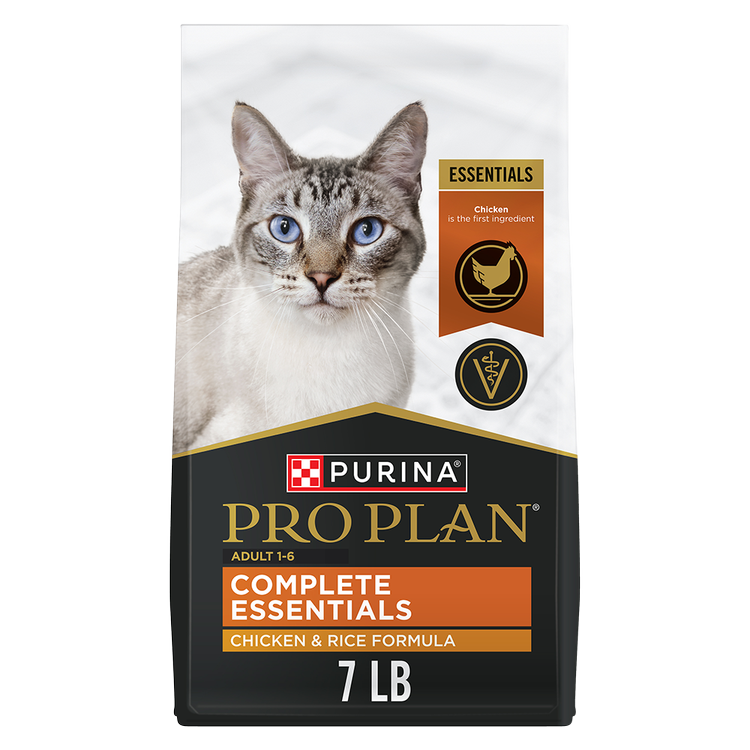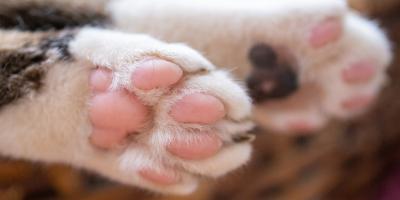Grooming a Cat: A Guide to Bathing, Brushing & Trimming Nails


Although most cats are excellent at grooming themselves, all cats require some level of grooming by their caretakers and most of it can be done right at home.
Grooming a cat at home can be a frequent or occasional experience depending on your cat’s needs. We recommend starting at a young age so they’re used to the grooming process, but if you adopt an adult cat, start with short sessions and build up from there to help set you both up for success.
The type of grooming your feline needs depends on a few different factors, like hair type or climate, for example. Cats generally require more grooming as the weather warms up and they lose their winter coat.
Follow this cat grooming guide to learn the essentials for grooming a cat.
Identifying Your Cat’s Grooming Needs
The frequency and amount of grooming a cat needs depend on their hair length and lifestyle.
Hairless cat breeds don’t need brushing, but they still require bathing, nail trimming and nail bed cleaning, skincare and routine ear cleaning—like their furrier friends.
On the other hand, most shorthaired cats are considered low maintenance and typically need to be brushed every one to two weeks, but some may only require it around once per month. Most cats with medium-length hair need weekly brushing to maintain their coats.
Finally, longhaired cats typically require daily brushing and combing to help prevent the matting and tangling of their hair. This practice also helps remove dirt and manages shedding.
Don’t forget to always use a gentle voice and give your cat treats periodically throughout each type of at-home grooming session to bring them comfort and put them at ease so that grooming can be a positive experience.
Brushing & Shedding Management
Brushing is one of the easiest ways to manage cat hair that can otherwise quickly accumulate on your couches and clothes.
Brushing also allows you to bond with your feline while helping improve the health of their coat. Not only does it offer them physical comfort, but it lets you help them minimize issues from self-grooming like hairball accumulation or oil buildup in their fur.
Plus, brushing helps reduce the amount of hair and dandruff flakes you might find on your furniture and floors—especially as the temperatures rise outside and shedding increases.
Simply brush from head to toe, as needed. Don’t forget to use a comb to remove fur from their undercoat, as well.
Bathing a Cat
How often you bathe your cat depends on their fur type and lifestyle.
Most hairless cat breeds need weekly baths to help manage oil, dirt and sweat buildup. You can use a wet washcloth or baby wipes to maintain skin hygiene between bath times. However, if your cat has fur but isn’t comfortable with baths, a wipe down is a less stressful alternative.
It’s no secret most cats find baths unpleasant. Don’t be discouraged; cats can get comfortable with baths over time. A few simple strategies can help make bath time more manageable.
Here’s what you’ll need to get started:
- Treats
- Cat-safe shampoo
- Cat-safe conditioner (optional)
- Rinsing cups
- Non-slip mat
- Plenty of towels
- A helper (if available)
- A pair of old clothes for yourself and a helper
The key to a successful cat bath is preparation. After you’ve gathered supplies, you’ll want to prep the area. The bathroom is ideal because you can shut the door, creating a safe and quiet space while limiting their ability to flee.
Have the water ready before your cat enters the bathroom because the running water might make them uncomfortable.
Make sure the water is shallow, meeting the bottom of your cat’s chest, and that the rinsing cups are already filled with water. You can place a non-slip mat in the tub.
Next, it’s time to prep your cat. Brush them from head to toe to remove any tangles, loose hair or debris. If your cat is uncomfortable with brushing or bathing, try separating these two tasks with a break in between and lots of petting and verbal praise. When you’re done, grab your helper and bring your feline friend to the bathroom and close the door.
Keep calm as you ease her into bath time, using a relaxing voice and a gentle touch.
Have your helper hold them or pass you the supplies as you rinse and then lather them up, avoiding the face. Complete the steps outlined on the products, rinsing with your cups of water. You can use a damp washcloth to wipe off any dirt on the face.
Be sure to rinse your cat thoroughly, washing away all products. Residual shampoo or conditioner can cause buildup. Finally, dry your cat off as much as possible before letting them get back to their routine.
Trimming Your Cat’s Nails
Trimming your cat’s nails at home can be intimidating. But we have some tips to help make it a better experience.
Keeping your cat’s nails trimmed brings them more physical comfort. It also helps protect you and everyday household items like curtains, couches and rugs from scratches, too.
Before you attempt to do this, you’ll want to touch their paws during a few play or cuddle sessions. Eventually, your cat should grow more comfortable with having their paws touched.
When you and your cat are ready for an at-home nail trimming session, enlist a friend to help you. You may want to try trimming them after your cat is tired from playing.
Here’s What You’ll Need to Get Started:
- Trimmers
- Styptic powder or cornstarch
- A helper
- Treats or cat kibble
Find a comfortable spot where you, your helper and your feline friend can all get comfortable. Trim no more than a couple of nails at a time, followed by verbal praise and brief petting. It’s ideal to keep sessions short. Don’t forget to trim the extra fifth nail on each of her front legs, also known as the dewclaw.
Trim by gently squeezing the top of each digit with your thumb and index finger, exposing the nail. Go in with the nail trimmers from the side and not the top, just trimming the tip.
Be extremely careful not to cut the nail’s quick (it has nerve endings and blood vessels). It’s pink and you should be able to see it through the sides of the nail. You want to leave some space between the quick and where you trim.
As you trim, check the length by looking at the nail head-on. Trim about halfway between the tip of their nail and the tip of their quick.
Apply pressure right away if you unintentionally cut the quick and the nail starts to bleed. If the bleeding doesn’t stop, apply styptic powder or cornstarch to help stop the bleeding. End the session if this occurs and follow up with verbal praise and petting.
If you or your cat are not comfortable doing this at home, take your cat to a professional groomer or your veterinarian for help.
An additional tactic to maintain nails at home is to place scratching posts throughout the house. This allows them to naturally file their nails down, sparing your furniture at the same time.
Cat Skincare
Like with humans, great skincare starts with hydration. Make sure your cat gets plenty of water. If their gums seem pale, you may want to increase their water intake.
Also, consider adding high-quality wet cat food to their diet. If your veterinarian approves, you can also consider giving them small doses of omega-3 fatty acids with meals.
Moisture in the air can also influence skin health. If the air in your home is dry, consider investing in a humidifier to improve the air quality.
The last form of moisture we recommend is topical—yes, there are skin moisturizers for cats. Using one can help during dry winter months. You’ll likely only need this if you have a hairless cat.
We hope this guide helps you groom your cat at home. For more tips, visit our Pet Expertise page and hear from our pet experts.
Related articles

Earn myPurina Rewards with Every Purchase
Use your points for treats, toys, and gift cards with myPurina app.






